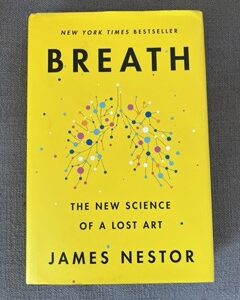Recently I needed to put together some resources for one of my clients about Borderline Personality Disorder. I thought I would share some of the information. I provided the basic symptoms, sites talking about comorbidity of BPD and eating disorders, and a few resources about living with someone with BPD and personal experiences of individuals with BPD. The resources include reliable websites including NAMI, NIMH and BorderlinePersonalityDisorder.org. I hope this information is helpful.
Basic Symptoms of Borderline Personality Disorder
The 9 symptoms of BPD
- “Fear of abandonment. People with BPD are often terrified of being abandoned or left alone. Even something as innocuous as a loved one arriving home late from work or going away for the weekend may trigger intense fear. This can prompt frantic efforts to keep the other person close. You may beg, cling, start fights, track your loved one’s movements, or even physically block the person from leaving. Unfortunately, this behavior tends to have the opposite effect—driving others away”
- “Unstable relationships. People with BPD tend to have relationships that are intense and short-lived. You may fall in love quickly, believing that each new person is the one who will make you feel whole, only to be quickly disappointed. Your relationships either seem perfect or horrible, without any middle ground. Your lovers, friends, or family members may feel like they have emotional whiplash as a result of your rapid swings from idealization to devaluation, anger, and hate”
- “Unclear or shifting self-image. When you have BPD, your sense of self is typically unstable. Sometimes you may feel good about yourself, but other times you hate yourself, or even view yourself as evil. You probably don’t have a clear idea of who you are or what you want in life. As a result, you may frequently change jobs, friends, lovers, religion, values, goals, or even sexual identity”
- “Impulsive, self-destructive behaviors. If you have BPD, you may engage in harmful, sensation-seeking behaviors, especially when you’re upset. You may impulsively spend money you can’t afford, binge eat, drive recklessly, shoplift, engage in risky sex, or overdo it with drugs or alcohol. These risky behaviors may help you feel better in the moment, but they hurt you and those around you over the long-term”
- “Self-harm. Suicidal behavior and deliberate self-harm is common in people with BPD. Suicidal behavior includes thinking about suicide, making suicidal gestures or threats, or actually carrying out a suicide attempt. Self-harm encompasses all other attempts to hurt yourself without suicidal intent. Common forms of self-harm include cutting and burning”
- “Extreme emotional swings. Unstable emotions and moods are common with BPD. One moment, you may feel happy, and the next, despondent. Little things that other people brush off can send you into an emotional tailspin. These mood swings are intense, but they tend to pass fairly quickly (unlike the emotional swings of depression or bipolar disorder), usually lasting just a few minutes or hours”
- “Chronic feelings of emptiness. People with BPD often talk about feeling empty, as if there’s a hole or a void inside them. At the extreme, you may feel as if you’re “nothing” or “nobody.” This feeling is uncomfortable, so you may try to fill the void with things like drugs, food, or sex. But nothing feels truly satisfying”
- “Explosive anger. If you have BPD, you may struggle with intense anger and a short temper. You may also have trouble controlling yourself once the fuse is lit—yelling, throwing things, or becoming completely consumed by rage. It’s important to note that this anger isn’t always directed outwards. You may spend a lot of time feeling angry at yourself”
- “Feeling suspicious or out of touch with reality. People with BPD often struggle with paranoia or suspicious thoughts about others’ motives. When under stress, you may even lose touch with reality—an experience known as dissociation. You may feel foggy, spaced out, or as if you’re outside your own body.”
Common Co-occurring disorders
Borderline personality disorder is rarely diagnosed on its own. Common co-occurring disorders include:
- depression or bipolar disorder
- substance abuse
- eating disorders
- anxiety disorders
Source : https://www.helpguide.org/articles/mental-disorders/borderline-personality-disorder.htm
Borderline Personality Disorder Website:
https://www.borderlinepersonalitydisorder.org
*This is a great website and the opening video on the home page goes over the basics of diagnostic criteria, treatments (DBT is recommended – Marsha’s work out of Seattle), comorbidity (including eating disorders), and some other great resources. I think watching the video itself would be helpful.
Other Reliable National Websites:
https://www.nami.org/About-Mental-Illness/Mental-Health-Conditions/Borderline-Personality-Disorder
https://www.nimh.nih.gov/health/topics/borderline-personality-disorder/index.shtml
Comorbidity with Eating Disorder
https://www.clearviewwomenscenter.com/blog/BPD-eating-disorders/
https://www.borderlineintheact.org.au/living-with-bpd/bpd-comorbidities/bpd-eating-disorders/
Living with Someone with BPD
https://www.nami.org/Blogs/NAMI-Blog/June-2017/Supporting-Someone-with-Borderline-Personality-Dis
https://psychcentral.com/blog/living-with-loving-someone-with-borderline-personality-disorder#1
https://www.yourhealthinmind.org/mental-illnesses-disorders/bpd/helping-someone
https://www.healthline.com/health/mental-health/things-to-know-borderline#1
Personal Stories/Experiences Living with BPD
https://www.mentalhealth.org.uk/stories/kaylas-story-living-borderline-personality-disorder
https://www.nami.org/Personal-Stories/A-Brief-Look-at-My-Life-with-Borderline-Personalit
https://www.thecut.com/2018/06/what-its-like-living-with-borderline-personality-disorder.html






